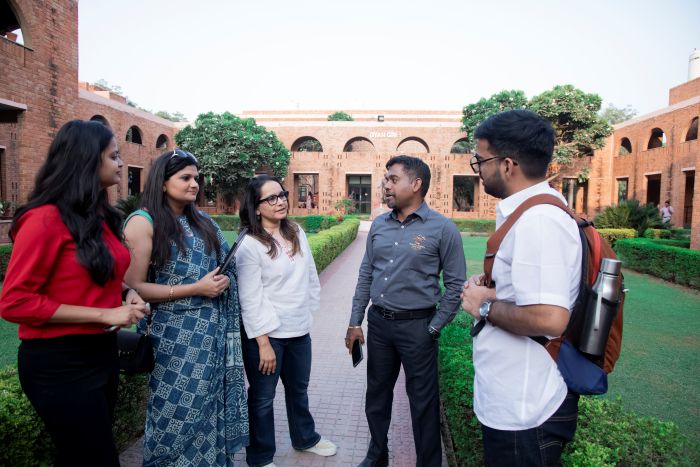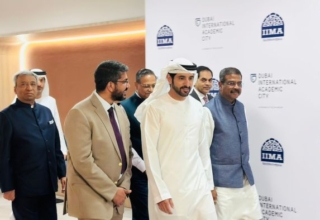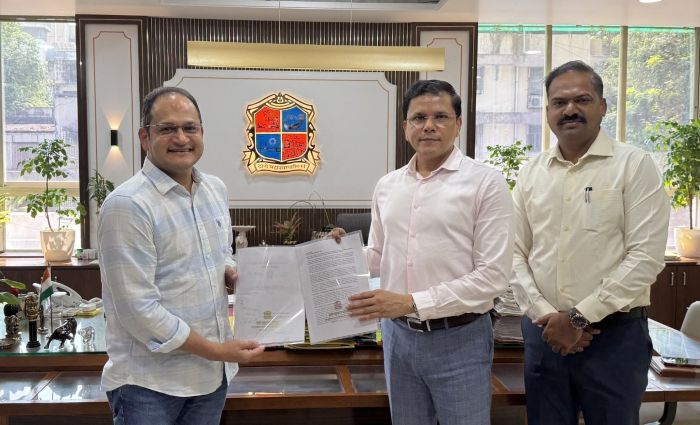
JEE (Mains) Session 2 commenced from April 4, and will continue on 5th, 6th, 8th, 9th and 12th of April 2024. NTA has advised all candidates to refrain from using unfair means / practices to gain any undue advantage over other candidates.
The National Testing Agency has implemented rigorous measures to deter malpractices and ensure the examination’s fairness, such as multistage verification, biometric authentication, EKYC and frisking of the candidates, the invigilation staff and any other associated functionaries. Even, if a candidate goes for bio-break/toilet, he/she should undergo the mandatory frisking and biometric again. Therefore, candidates are again advised not to move during the examination and should not indulge in talking/peeping or assisting others in the Examination. Such an act may lead to cancellation of the candidature and debarring the candidate for current year and in future from appearing in the exam, and it invites to initiate the criminal proceedings/strict action against the wrong-doer.
The surprise visits by flying squads to oversee the examination, deployment of full time Observers, utilization of AI tools to identify discrepancies in candidates’ application details, matching of their biometrics and particulars remotely through AI and also by a physical thorough invigilation supervision, have been made to be put in place.
The enactment of the Public Malpractice Act 2024 obliges exam agencies to take stringent action against those involved in malpractices. Furthermore, local law enforcement authorities also keep watch and take necessary action against any instances of malpractice as and when occurred. NTA has taken disciplinary action against certain candidates based on post-examination data analysis.
For JEE (Main) Session-2 also, NTA has deployed various processes to prevent the malpractices, therefore, even during the ongoing Examination, any candidate is subject to verification, biometric, frisking in view of the signal which may be flashed through AI tools, CCTV analysis and live streaming in the NTA’s Command Control Room.
Further, NTA conducts post-examination analysis of the responses of the treated group with respect to cheating behaviour associated with the exam by observational data, interesting statistical approaches etc. There may be use of non-intrusive technology to identify collaboration, the question attempting Logs are also analysed to identify the suspicious similarities between submitted responses. Candidates’ examination logs, behaviour and CCTV recordings are also being examined of such candidates. This process will be consistently applied to all future examinations conducted by NTA, aiming to ensure fairness and transparency so that only deserving candidates secure admissions or jobs.
Student feedback on JEE (MAIN) 2024 (Session-II) PAPER-I (for B.E. / B. Tech) on 4th April 2024
By Ramesh Batlish, Head-FIITJEE Noida Centres
The reporting time for students was 1:30 pm however the exam started sharp at 3:00 pm.
Candidates were strictly prohibited from bringing instruments/geometry/pencil boxes, handbags, purses, any paper/stationery/textual material (printed or written), food and water (loose or packed), mobile phones, earphones, microphones, pagers, calculators, slide rules, log tables, cameras, tape recorders, or wearing/carrying any type of watch, including electronic watches with calculator features, metallic items, or electronic gadgets/devices into the Examination Hall/Room
Students reported that entry started as soon as they were screened at the entry point. Time Clock on computer screen was provided inside the examination hall.
What students said after the exam:
(1) There were total 90* questions and Total marks of JEE Main Paper-1 was 300. (* 5 out of 10 questions were to be attempted from Numerical Based section in each subject)
(2) The paper had three parts & each part had two sections:
Part-I- Physics had total 30*questions – Sec-I had 20 Multiple choice questions with Single correct answers & Sec-II had 10 Numerical based questions out which only 5 had to be attempted. Marking scheme for multiple choice questions was +4 for correct response, -1 for incorrect response, 0 if not attempted. Marking scheme for numerical based questions was +4 for correct response, -1 for incorrect response, and 0 in all other cases. Total marks of this section were 100.
Part-II- Chemistry had total 30*questions – Sec-I had 20 Multiple choice questions with Single correct answers & Sec-II had 10 Numerical based questions out which only 5 had to be attempted. Marking scheme for multiple choice questions was +4 for correct response, -1 for incorrect response, 0 if not attempted. Marking scheme for numerical based questions was +4 for correct response, -1 for incorrect response, and 0 in all other cases. Total marks of this section were 100.
Part-III- Mathematics had total 30*questions – Sec-I had 20 Multiple choice questions with Single correct answers & Sec-II had 10 Numerical based questions out which only 5 had to be attempted. Marking scheme for multiple choice questions was +4 for correct response, -1 for incorrect response, 0 if not attempted. Marking scheme for numerical based questions was +4 for correct response, -1 for incorrect response, and 0 in all other cases. Total marks of this section were 100.
(3) Questions covered almost all chapters of Class XI & XII CBSE Board. Balanced Paper.
(4) The level of difficultly as per feedback from students on 4th April, 2024 (Afternoon Session).
Mathematics – Moderately Tough. Weightage was given to chapters of Algebra and Calculus. Questions from Circle, Parabola & Hyperbola with mixed concept questions in Coordinate Geometry. In Calculus, questions asked from Limits, Application of Derivative, Definite Integral, Differential Equations, Area. In Algebra, questions asked from Complex Number, Progressions- 2 ques, Permutation & Combination, Binomial Theorem, Statistics, Matrices & Determinants, Probability- 2 ques & Vector &3D Geometry- 3 questions. Few MCQs & numerical based questions had lengthy calculations and were Tricky.
Physics – Easy. Questions asked from almost all chapters. Some good questions from chapters of Kinematics, Laws of Motion, Work Power & Energy, Heat & Thermodynamics, Sound & waves, Rotational Motion, Optics, Current Electricity, Modern Physics, Atoms & Nuclei. Numerical based questions were Easy. Physics was balanced and Easy.
Chemistry – Easy to Moderate. Inorganic & Organic Chemistry had more weightage as compared to Physical Chemistry. Questions asked from GOC, Alcohols, Ether & Phenols, Amines, Aldehydes & Ketones, Biomolecules, Aryl & Alkyl Halides mixed concept questions, Physical Chemistry had questions from Atomic Structure, Thermodynamics, Electrochemistry & Chemical Equilibrium. Inorganic Chemistry had questions from d & f -block elements, Coordination Compounds & Chemical Bonding. Some NCERT fact-based questions asked which made it Easy for students.
(5) In terms of order of Difficulty – Overall, this paper was of Moderate level as per students in all three subjects.
(6) Students were given booklet for rough work.
(7) There was tight invigilation as per students.
(8) No errors were reported in the question papers.
Analysis of JEE (Main) paper of April 4, 2024 (Morning Shift)
by Ajay Kumar Sharma, National Academic Director, Engineering, Aakash Educational Services Limited (AESL
NTA has followed the same level of difficulty of Phase-2 as compared to the one asked in Phase-1. The JEE MAIN paper of April 4, 2024 (Morning Shift) was of Moderate level due to the lengthy questions in Maths. In this paper, Physics was on the easier side whereas Chemistry was also on the easy to moderate side. In this paper, Mathematics was on moderate to difficult side with lengthy and calculative questions. A detailed subject wise analysis is given below.
Chemistry
Chemistry paper was more or less balanced in terms of difficulty level as well as the number of questions from the three sections. Questions from prominent chapters like Chemical Kinetics, Alcohol, Phenol and Ethers, Electrochemistry, Thermodynamics were asked. P-Block chemistry was dominant in the paper. Overall coverage of the chapters was uniform. Among 11th and 12thclass, more number of questions were asked from 12th class syllabus. The paper was by and large based on NCERT books.
Physics
Physics part was on easier side and questions from almost all the chapters were asked. Questions from Modern Physics, Mechanics, Electrostatics and Current electricity were there in the paper. The coverage of the questions was almost equal with more number of questions asked from 12th class.
Mathematics
Mathematics paper was moderate to difficult level. A good number of questions were asked from Calculus. Integer type questions were lengthy in the paper. Almost all the topics were covered. The main thing is questions were both lengthy and calculative which took a lot of time to solve.
In short, it was a decent paper with Mathematics being the toughest among all due to the lengthy part. The difficulty level wise order according to a large section of students is
Mathematics > Chemistry > Physics







